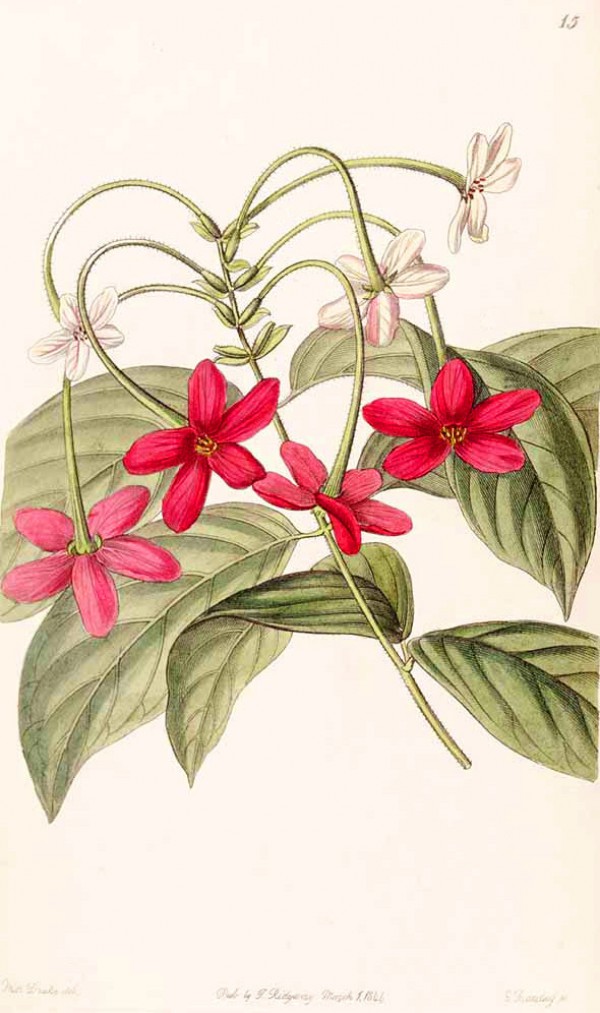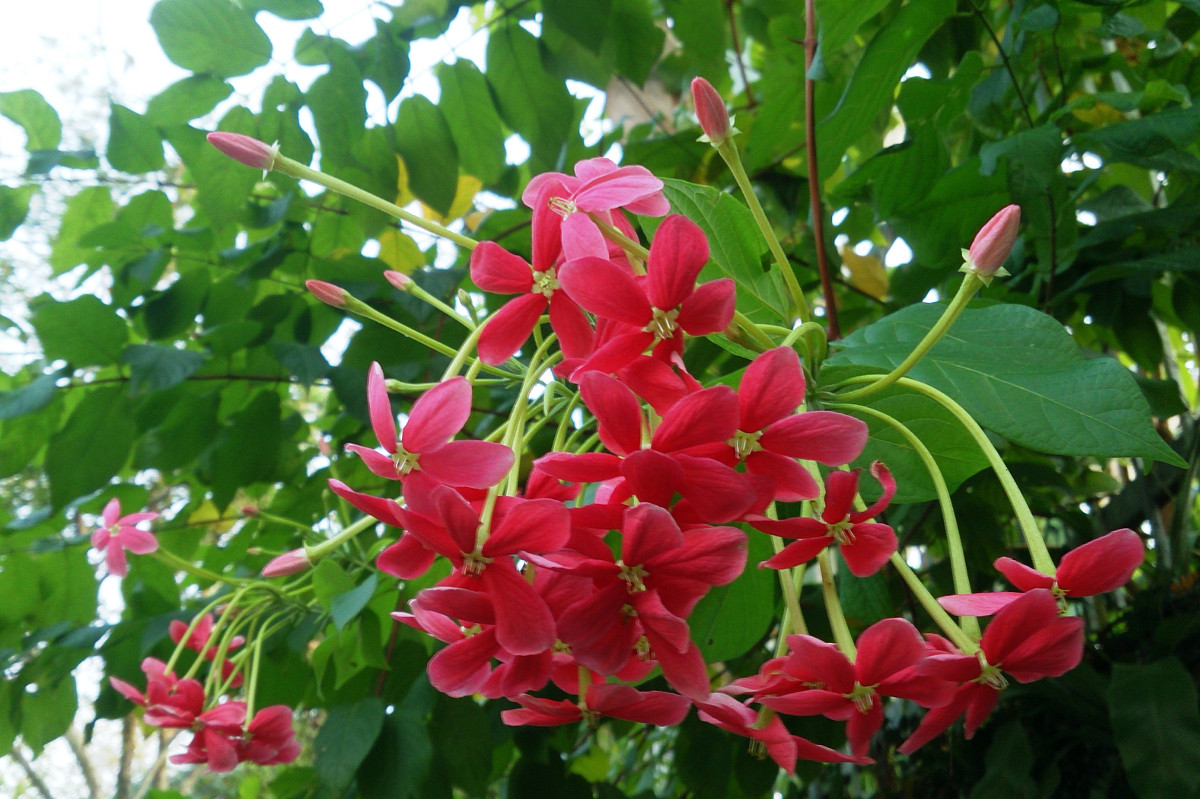Benutzer-Werkzeuge
Combretum indicum (L.) DeFilipps - syn.Quisqualis indica L. - Combretaceae
Rangoon creeper, Chinese honeysuckle, Rangunschlinger
Woody vine, native to tropical Southeast Asia, cultivated and naturalized in tropics; leaves opposite, elliptical; flowers tubular, fragrant, white to pink or red.
„The 30 to 35 mm long fruit is ellipsoidal and has five prominent wings. The fruit tastes like almonds when mature… Dr John Ivor Murray sent a sample of the „nuts“ to the Museum of Economic Botany in Edinburgh in 1861, with a note that they were „used by the Chinese for worms“ and a description of the means of preparation and dosage.“
http://en.wikipedia.org/wiki/Combretum_indicum
„Q.indica… has white and horizontally oriented flowers that open at dusk and, on the following day, change to pink and later to red, simultaneously changing orientation to become pendulous. The flowering period for each flower is three days. At night, white flowers are visited by hawkmots, while the red flowers are neglected by night visitors. During the day, pink and red flowers are visited by… bees, honeybees, flies and sunbirds.“
[Flower orientation and color change in Quisqualis indica and their possible role in pollinator partitioning., Eisikowitch, D., Rotem, R., Botanical Gazette, 1987, 175-179]
„It is found that the CO2 method of fractionation of pentane extract is a practical process providing an organoleptically superior product, though the later is not still totally free from waxes. The subcritical CO2 extract of flowers contains the desirable odoriferous compounds with lower amounts of waxy substances and is organoleptically superior. The major components detected in the extracts are (E)- and (Z)-linalool oxides (furanoid form), 2,2,6-trimethyl-6-vinyl-3-keto-tetrahydropyran, 2,2,6-trimethyl-6-vinyl-3-hydroxy-tetrahydropyran (linalool oxide pyranoid form), (E,E)-α-farnesene, (Z)-3-hexenyl benzoate and benzyl benzoate and a tentatively identified compound quinoline carbonitrile along with some waxy components.“
[Subcritical CO2 extraction of floral fragrance from Quisqualis indica., Rout, P.K., Na4ik, S.N., Rao, Y.R., The Journal of Supercritical Fluids, Vol.45(2), 2008, 200-205]
Major component of the volatiles emitted from living flowers of Rangoon creeper is (E,E)-α-farnesene (besides unknown hydrocarbon, HS-SPME/GC-MS). 2,2,6-Trimethyl-6-vinyl-tetrahydro pyran-3-one (7.8%), quinoline 4-carbonitrile (5.8%), hexyl tiglate (4.5%), (Z)-3-hexenyl benzoate (2.0%) are also important constituens. Esters like methyl-, hexyl- and benzyl benzoate, (Z)-3-hexenyl-2-methyl butyrate, and (E)-2-phenylethyl tiglate give further sweet, fruity, green and earthy (benzyl tiglate 1%) notes. A creamy one is added by δ-decalactone (1.2%).
[Analysis of floral volatiles by using headspace-solid phase microextraction: a review., Rout, P.K., Rao, Y.R., Naik, S.N., Asian J. Chem., Vol.24, 2012, 945-956]

Edwards’s Botanical Register, vol. 30: t. 15 (1844) [S.A. Drake]
http://www.plantillustrations.org/species.php?id_species=266121

Combretum indicum: Chinese honeysuckle, Rangoon creeper (2014)
CC BY-SA 3.0, Author: Mokkie Wikimedia Commons
